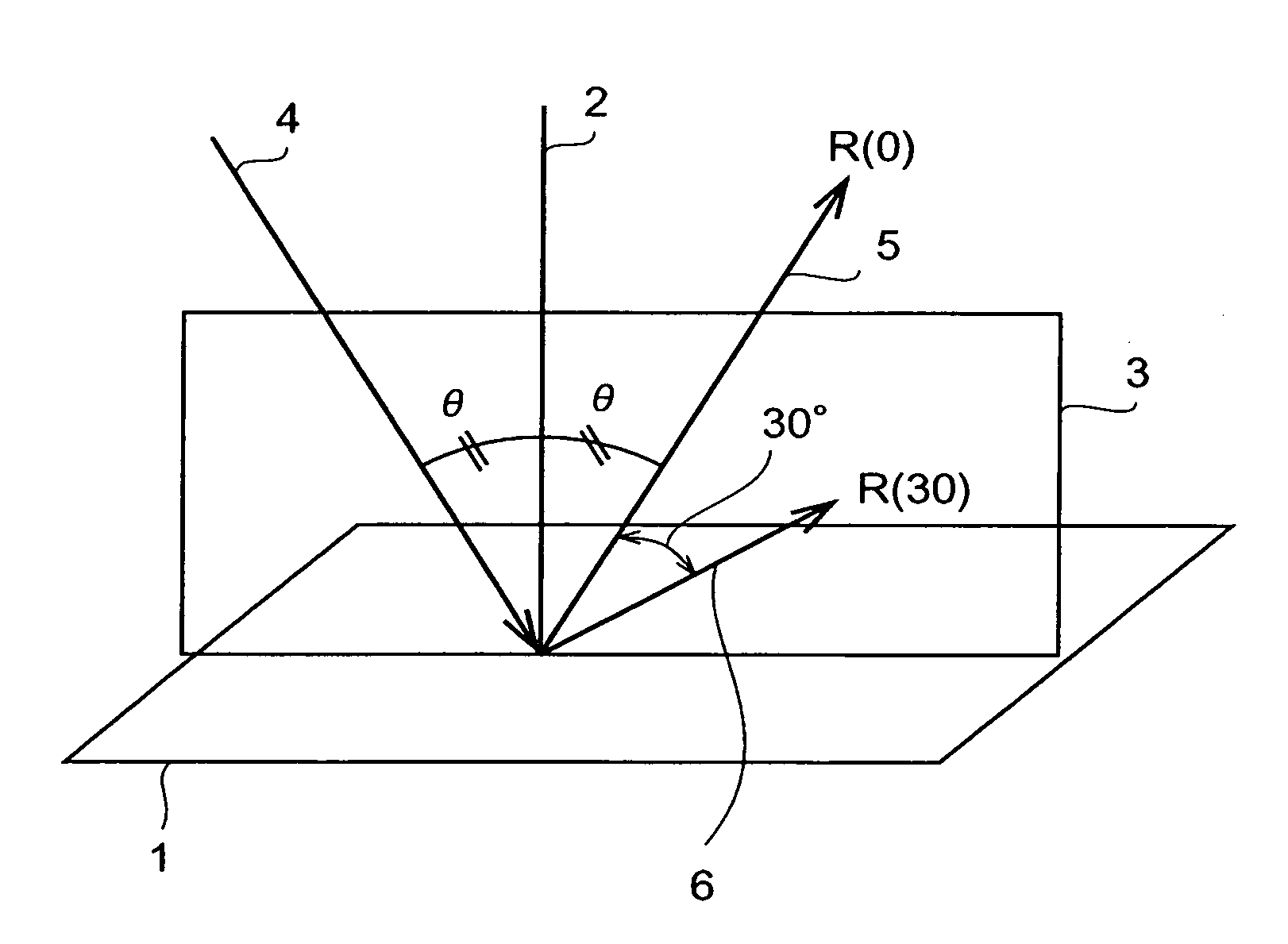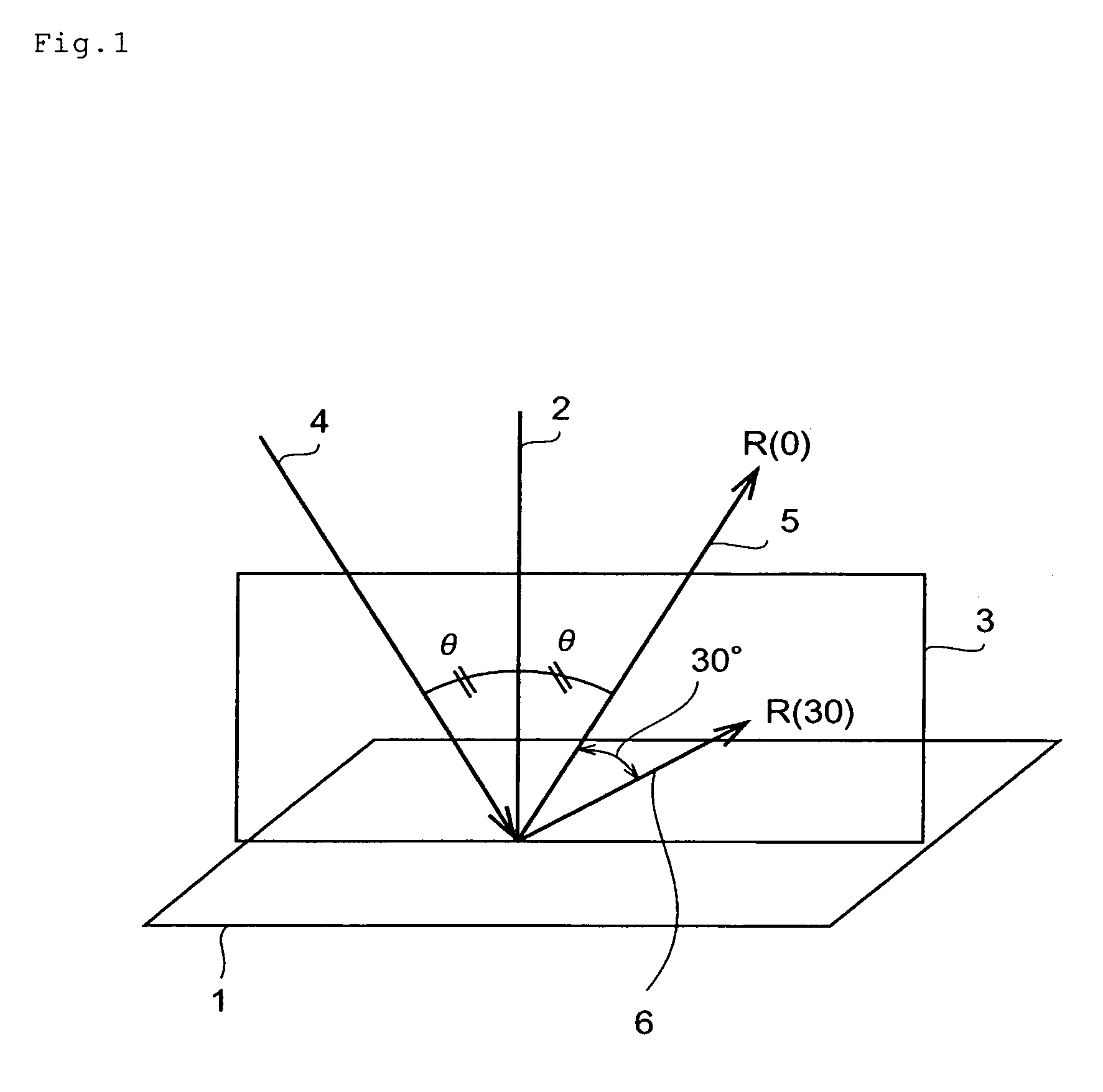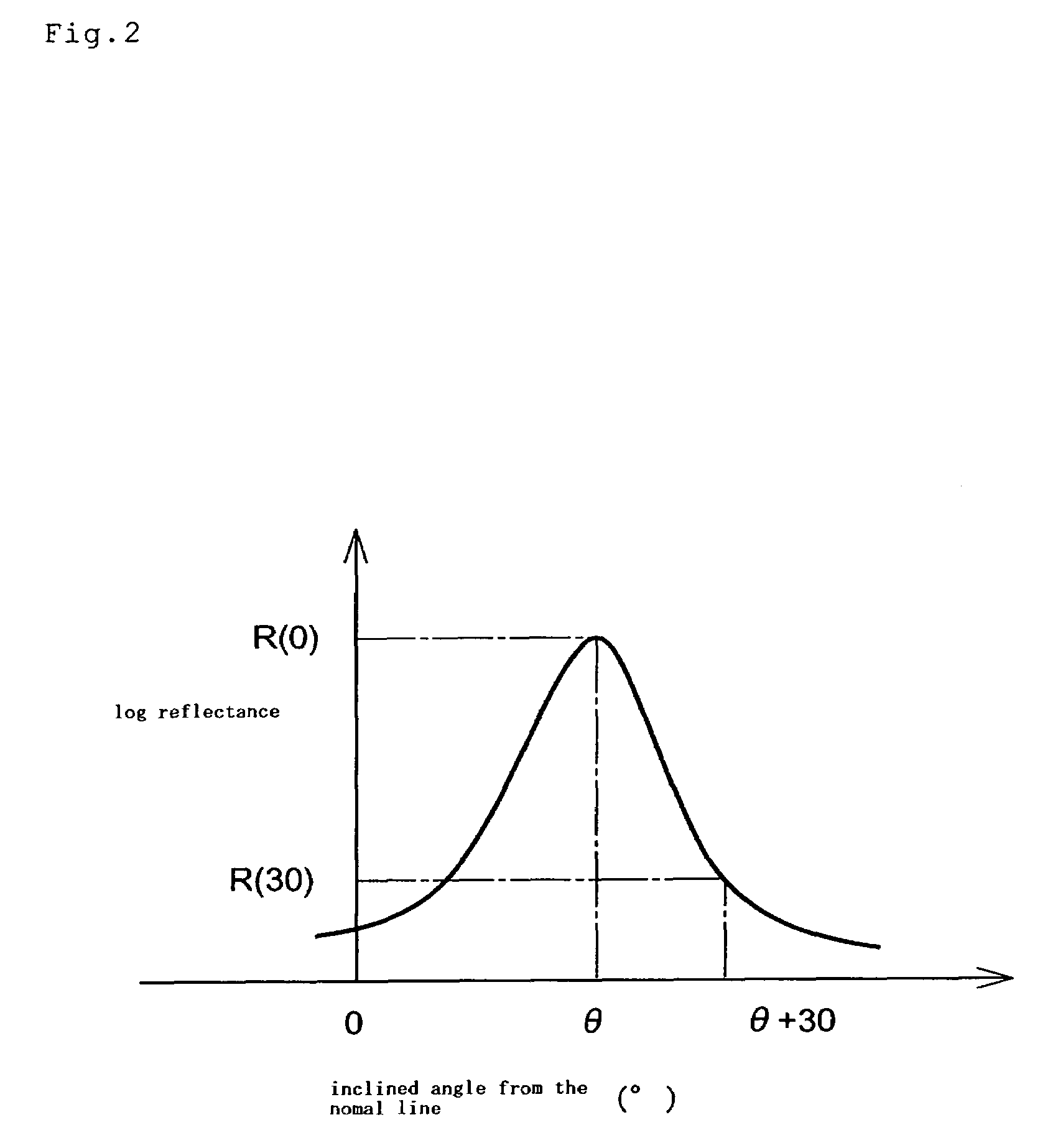Anti-glare film, method of producing the same, and display equipped with the same
a technology of anti-glare film and anti-glare film, which is applied in the direction of screws, threaded fasteners, instruments, etc., can solve the problems of high cost of anti-glare film produced by such a method, insufficient anti-glare function, and inability to achieve the effect of anti-glare function
- Summary
- Abstract
- Description
- Claims
- Application Information
AI Technical Summary
Benefits of technology
Problems solved by technology
Method used
Image
Examples
example 1
[0075]First, 75 round apertures having a diameter (D) of 9 μm were provided in a region of 127 μm×127 μm so that the average value m1 of shortest distances between center coordinates of the apertures was 14.7 μm and the standard deviation σ1 of the shortest distances was 1.049. This was used as a unit cell, and several unit cells were placed at a period of 127 μm on the whole surface of a region of 80 mm×80 mm, to produced a two gradient photo-mask of 6 inch square.
[0076]Next, a positive photo-resist (manufactured by Tokyo Okasha K.K., trade name: PR13) was spin-coated on a glass plate giving a thickness of about 1.1 μm. The resulted glass plate with photo-resist was placed for 60 seconds on a hot plate heated at 110° C. for pre-bake. On this photo-resist, the above-mentioned photo-mask was kept so that the exposure gap was 180 μm (=L), and irradiated with light of g, h and i multi-line of a super high pressure mercury lamp as an exposure light source at a rate of 150 mJ / cm2 in term...
PUM
| Property | Measurement | Unit |
|---|---|---|
| Fraction | aaaaa | aaaaa |
| Fraction | aaaaa | aaaaa |
| Angle | aaaaa | aaaaa |
Abstract
Description
Claims
Application Information
 Login to View More
Login to View More - R&D
- Intellectual Property
- Life Sciences
- Materials
- Tech Scout
- Unparalleled Data Quality
- Higher Quality Content
- 60% Fewer Hallucinations
Browse by: Latest US Patents, China's latest patents, Technical Efficacy Thesaurus, Application Domain, Technology Topic, Popular Technical Reports.
© 2025 PatSnap. All rights reserved.Legal|Privacy policy|Modern Slavery Act Transparency Statement|Sitemap|About US| Contact US: help@patsnap.com



